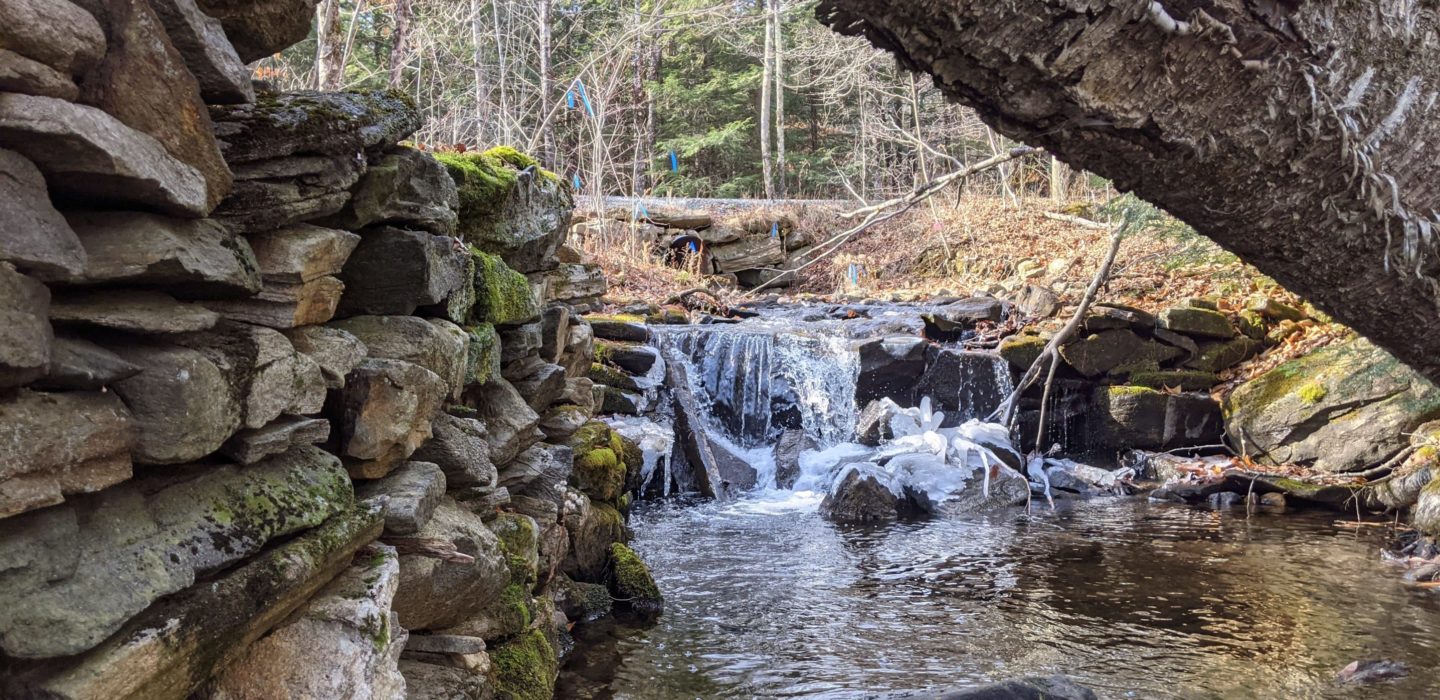Benton Hill Road Culvert Replacement and Ecological Services
Becket, Massachusetts
BETA is providing design services for the replacement of a culvert on Benton Hill Road. This project will replace a perched four-foot corrugated metal pipe with a new, larger structure that aims to restore the natural flow of the stream as closely as possible. The design effort is being funded by the Massachusetts Division of Ecological Restoration’s (DER) Culvert Replacement Municipal Assistance Grant Program. This program aids municipalities with replacing undersized or perched culverts in areas of high ecological value with crossings that meet the goals of the Massachusetts Stream Crossing Standards. Meeting these goals can mean replacing the culverts with an opening large enough to include the entire bank full width of the stream, changing the horizontal and/or vertical alignment to better replicate the natural flow of the stream, and replacing the channel material to match the naturally occurring material of the upstream or downstream streambed.
BETA’s Ecological Services and Permitting Group conducted a federal and state resource area identification and boundary delineation along a tributary to the West Branch of the Westfield River. Accurately identifying boundary limits was necessary to quantify and mitigate environmental impacts to each resource area subject to protection under the Massachusetts Wetlands Protection Act and the Federal Clean Water Act. As part of the field assignment, BETA’s multidisciplinary team of scientists and biologists collected sediment samples for grain size analysis, determined the Bank-Full-Width of the River, and conducted a stream bed composition pebble count. This field data provided the structural and civil engineers with the information needed to model the stream flow scour potential; to design the width of the new bridge structure for compliance with the Massachusetts Stream Crossing Standard; and to specify the material to be used to restore the streambed.
This perennial tributary is designated by the National Parks Service as a “Wild and Scenic River” and is a State-designated Coldwater Fisheries Resource. As such, improving the stream crossing by providing an adequate opening and appropriate profile is critical to the ecological functions of the West Branch of the Westfield River both upstream and downstream of the culvert.



